- 名称:
- HB
- 组:
- 暹罗猫&东方短毛猫
- 类别:
- 基本的
- 起源:
- USA , United Kingdom
The origin of the breed
These cat's fine name tells you lot about it's colour, which resembles the one of havana cigars. These traits of a cat, an asian-type cat with a rich brown colour, that duchess von Ullmann has requested back in XX century. That was the goal Duchess and fanciers alike were pursuing by crossing siamese cats with black british shorthair, stray and russian blue felines. The resulting breed and colour were labelled as Oriental Chestnut and Havana respectively. Their work was later carried on in USA, where they would be crossed with american shorthair. By the year of 1964 the breed was given official recognition and a title of primary breed under a name oh Havana. In Europe, however, the breed was not that easily accepted, as if the FIFe has rejected it at first, and was only given an SCFF recognition in 1958 as the Havana Brown. After 1971 there was a tendency leave only Havana part in names, as if the colour is presumed by it, and moreover because there were first lilac havanas sprawling in some clubs.
Appearance
A medium-sized feline weighing around 5 - 10 lbs, it is rather well build for the weight. It has a rather long or an average (acc to TICA) body, with elongated slim body and long legs. It generally doesn't look it's weight. Best description for their built is a heavy-duty siamese cat, a fit runner, an athlete without excessive leanness.
Head: Longer than wide. There are 2 types of Havana: English and American.
English type Havanas have an oriental type of the head: without any definite line on the forehead and nose border and without definite line of the cheekbones.
American type Havanas have an almost wedge form with a definite line of cheekbones and well pronounsed profile break at the eye level. Forehead is a bit rounded. Muzzle is rather narrow, long, triangle; rounded contours with a pronounced break on both sides behind the whisker pads. Profile has a definite stop at the eyes' level.
Eyes: Big, oval, but not bugged, set slanted and close to the nose bridge. Color - only green, but any shade of it. Any other color shade are acceptable only in young cats.
Ears: Large, round tipped, wide set, but not flaring, pricked slightly forward, alert. Very little hair outside, furnishings, almost non-existent.
Neck: Medium long, elegant.
Torso: Medium size, with graceful contours, slender. English type Havana - tubular and long body. American type Havana - medium length, neither cobby, nor rangy. Boning is average, musculature is firm.
Legs: Long for size of cat, with slim but not fine boning.
Paws: Oval in shape, compact in size.
Tail: Medium long or long, slender. Not too broad at base, tapers at the end.
Coat: Short, thin, silky, brilliant, lying close to the body. Smooth and soft to touch. With not much undercoat. Allowance for fuller coat on lilacs. (TICA)
Colors: Any shade of chocolate. Nose leather is brown with a rosy flush, paw pads - rosy toned.. CFA accepts only chocolate color on this breed: a rich and even shade of warm brown throughout; color tends toward red-brown (mahogany) rather than black-brown. TICA accepts lilac color, as well - coat color with a rosy shade. Sometimes havana kittens are born with a ghost tabby markings, which vanish through the 1st period of life.
Окрасы: Любой оттенок шоколадного цвета. Мочка носа при этом должна быть коричневой с розоватой основой, подушечки лап более светлые с розоватым отливом. CFA признает кошек только шоколадный окрас у этой породы: богатый и однородный оттенок теплого коричневого цвета, но цвет приближен более к красновато-коричневому (махогон), чем к черно-коричневому. TICA, помимо коричневых окрасов, признает также лиловый окрас – цвет шерсти у кошки имеет приятный розовый отлив. Котята Гаваны могут появляться на свет с ложным рисунком табби, который исчезает в течение первого периода жизни.
Penalize: Absence of a nose break, weak chin, too bugged eyes, too flaring ears.
Недостатки: Отсутствие четко выраженного перехода по линии профиля (TICA); слабо развитый подбородок; выпуклые глаза; слишком "разваленные" уши.
Disqualification on shows: any other color than green, white lockets, kincked tail.
Disqualification for all breeds: Amputated claws, cryptorchism, deafness. Any bone deformation in the head, body, limbs.
Character traits and features
Havana brown is an active and playful pet. With a character completely deprived of any aggression, it is sociable and jolly, you may be sure it will find comfort in any living space and would be twice happier given some open air. This cats behave as if they live and think in vertical direction, which is compensated by their tenderness with the owner and tactfulness with strangers. It makes a fine living with any cats, be they from the same breed or from any relevant one, including but not limited to siamese and oriental. They talk quite a bit, but not nearly as much as their siamese counterparts, yet are just as stressed by loneliness.
Maintenance and care
By giving a glimpse at their short and streamlined coat you may guess these are no problem to look after. All you are supposed to do is to pet them with a soft brush on a daily basis. Also, it is recommended to stroke a cat with wet hands everyday, as though gathering loose hairs.
Nutrition choices
Balanced nutritions are preferred
Selection and breeding
Allowed crossings: none
Breeds relevant or derived from Havana:
Savannah - a cross between havana and a massive african serval, these cats have longer limbs and spotted coat.
Alternative and obsolete names of the breed
Oriental chestnut;
Smooth Brown Asian;
Berkshire brown;
Swiss Mountain Cat.
